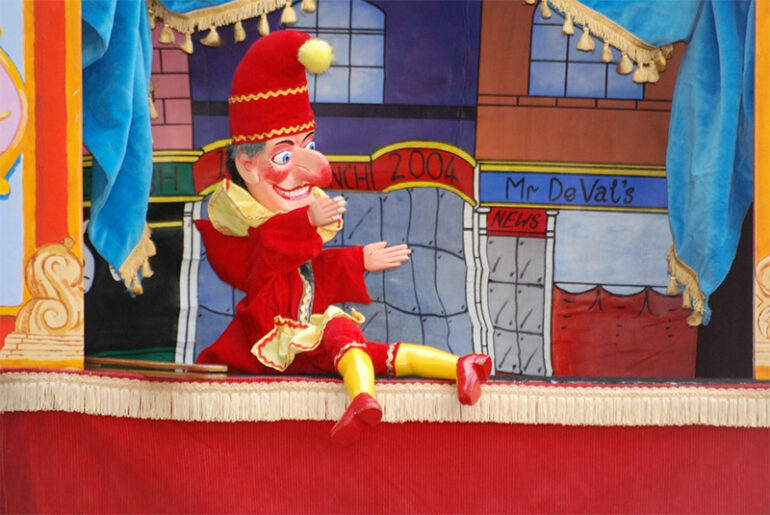Puppetry goes centuries back, a theatre form involving controlling puppets, figures that resemble humans or animals that come to life through the manipulation of a puppeteer. This type of performance is referred to as puppet production, while the performance script is known as a puppet play. A puppeteer is a person who makes use of their hands to take control of specific tools like strings or rods to animate puppets, allowing them to move their body, including their eyes and mouth. A puppeteer may also speak, using the puppet’s character to provide the voice quality required for its personality and the script. Other times, they may opt to use a pre-recorded track to perform with.
Types of puppets
There are various types of puppets made from different kinds of materials according to what particular form is required for the performance. The process of constructing a puppet can be either very complicated or relatively simple. Finger puppets are the easiest ones to make, and tiny puppets slipped into the finger. Sock puppets are pretty easy to make too. A sock is used to construct the puppet, and the puppeteer’s hand is inserted into the sock, opening and closing the hand to simulate the mouth of the puppet. Punch and Judy are hand puppets controlled by one hand inside them to make them move. The Bunraku puppets of Japan are hand puppets that call for two puppeteers to control one puppet. The marionettes dangle, and the puppeteer controls them by using several strings that may be attached to a rod connected to the control bar. A rod puppet is constructed with its head connected to the central rod and its arms attached to a rod that forms the body. The arms of the puppet are then controlled using separate rods, allowing more movement than hand puppets.
What it takes to be a puppeteer
If you are one of those who loved to watch the Muppet show in the past, you may have also wanted to become a puppeteer yourself. Puppeteers have the unique ability to bring smiles not only to children’s faces but adults as well. They also have the opportunity to perform in theaters, relating stories that are pretty different from others. What you may think are necessary skills to give puppetry a shot may not be as essential as you think they are. For others, the assumption is that a puppeteer must be skilled in constructing puppets, but this is not true. Anyone can buy puppets from puppet makers, so that is a concern you can put to rest. Manipulating puppets is not complicated either, and one can quickly learn the ropes, except for marionettes that take more time. However, you are required to know how to engage people with your story-telling and acting. You also have to be able to talk in different voices, which takes time and practice. It is always best to keep in mind that practice makes perfect for any skill, and puppetry calls for it.
Puppetry requires creativity, determination, and a deep passion for this art form. Mastering it can lead to employment opportunities in film and stage productions. It can also be applicable in festivals and other special events or in teaching traditional arts.
Photo Attribution:
1st and featured image from https://pixabay.com/photos/punchinello-clown-fun-352052/
2nd image from https://pixabay.com/photos/theater-kasper-play-dolls-547007/

